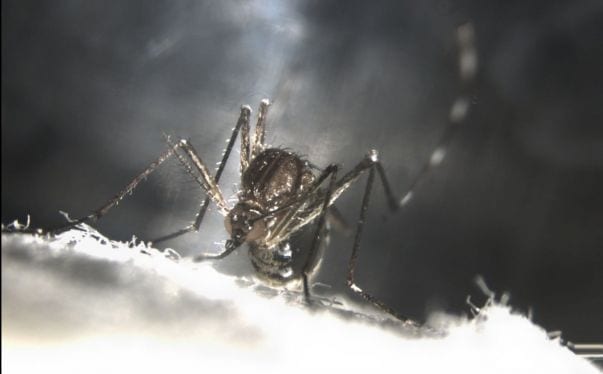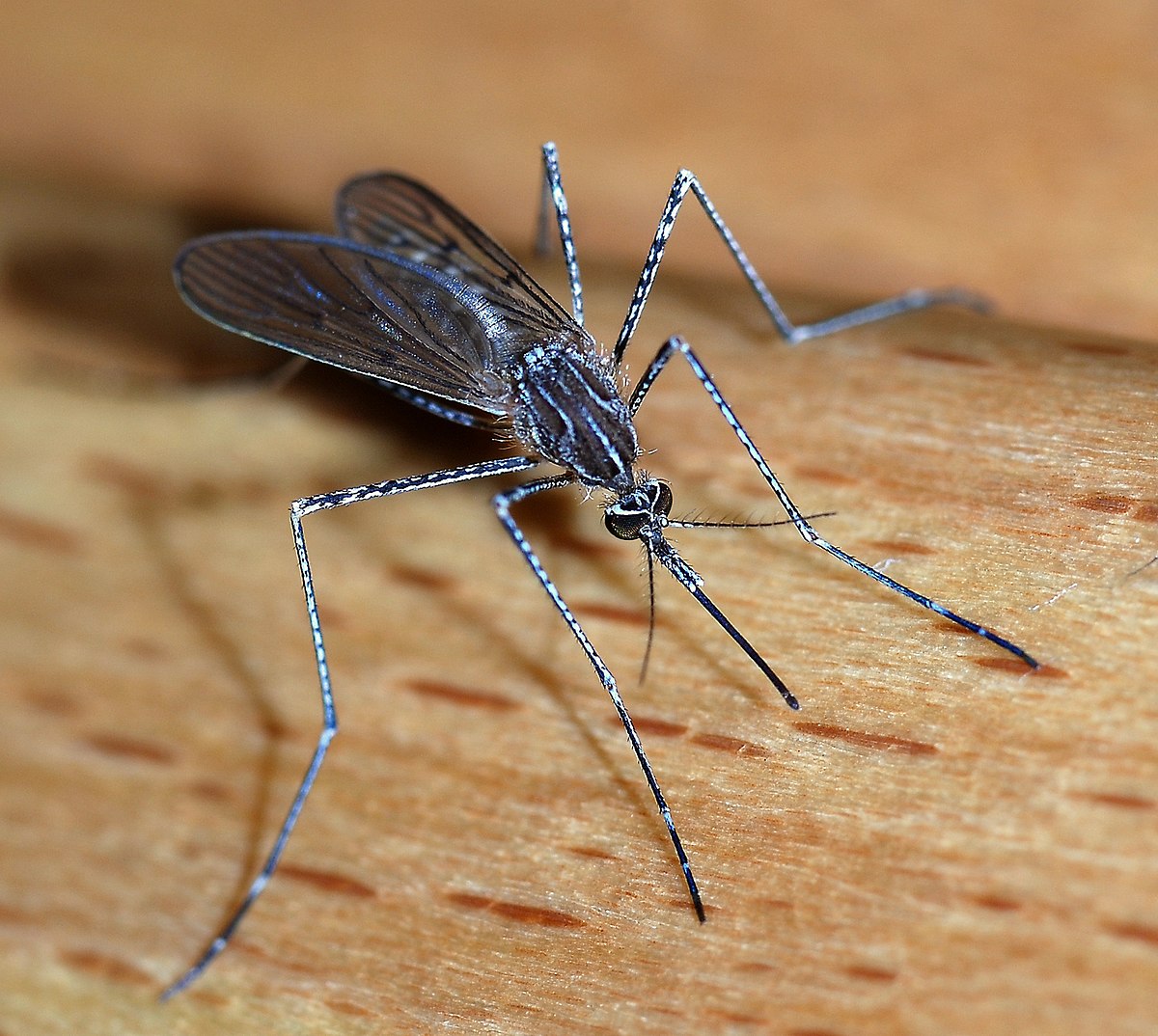
MICHELLE BUI, UC RIVERSIDE.
UCR researchers are generating genetically engineered insects to help prevent the spread of infectious diseases
Researchers at the University of California, Riverside have developed transgenic mosquitoes that stably express the Cas9 enzyme in their germline. The addition of Cas9 will enable the use of the CRISPR gene editing tool to make efficient, targeted changes to the mosquitoes’ DNA.
As proof of concept, the researchers used the system to disrupt cuticle, wing, and eye development, producing completely yellow, three-eyed and wingless mosquitoes. Their long-term goal is to use Cas9-expressing mosquitoes together with another technology—called gene drives—to insert and spread genes that suppress the insects while avoiding the resistance that evolution would typically favor. Aedes aegypti are major carriers of dengue, chikungunya, yellow fever, and zika viruses, and are rapidly becoming resistant to commonly used pesticides.
Published today in the Proceedings of the National Academy of Sciences (PNAS), the study was led by Omar Akbari, an assistant professor of entomology in UCR’s College of Natural and Agricultural Sciences and a member of the university’s Institute for Integrative Genome Biology.
Previous efforts to use genome editing to prevent mosquitoes from spreading pathogens have been hampered by low mutation rates, poor survival of edited mosquitoes, and inefficient transmission of disrupted genes to offspring. Akbari and colleagues developed transgenic mosquitoes that stably express a bacterial Cas9 enzyme in the germline, enabling highly efficient genome editing using the CRISPR system. CRISPR works like a pair of molecular scissors, cutting out and replacing specific DNA sequences based on a ribonucleic acid (RNA) guide. In the paper, the team used the system to disrupt genes that control vision, flight and feeding, resulting in mosquitoes with an extra eye, malformed wings, and defects in eye and cuticle color, among other changes.
Akbari said these strains represent the first step toward using gene drive systems to control mosquito populations and reduce the diseases they spread.
“These Cas9 strains can be used to develop split-gene drives which are a form of gene-drive by which the Cas9 and the guide RNA’s are inserted at separate genomic loci and depend on each other for spread. This is the safest way to develop and test gene drives in the laboratory to ensure no spread into the wild,” Akbari said.
CRISPR/Cas9-mediated disruption of genes associated with cuticle pigment caused mosquitoes to turn from black to yellow, and disruption of genes associated with eye pigment caused eye color to change from black to white.
Gene drives greatly increase the odds that a gene or set of genes will be passed on to offspring—from 50 percent to 99 percent. This number can potentially increase to 100 percent when a target gene is disrupted in multiple sites, a technique called multiplexing that has recently been mathematically modeled by Akbari and colleagues at UC Berkley.
Gene drives can be used to bias genetic inheritance in favor of rapidly spreading, self-destructive genes—such as those that disrupt fertility—and could be an environmentally friendly and cost-effective way to suppress populations of disease-spreading insects.
“Next steps should be undertaken to identify the regulatory sequences that can be used to express the guide RNAs from the genome, and once these sequences are identified developing gene drives in the species should be turnkey,” Akbari said.
Learn more: Making Mosquitoes Self-Destruct
The Latest on: Genetically engineered insects
[google_news title=”” keyword=”genetically engineered insects” num_posts=”10″ blurb_length=”0″ show_thumb=”left”]- Stopping GMO crops may cause ‘more harm than good’ – scientistson April 26, 2024 at 10:34 pm
A recent court decision halting the production of the genetically modified crops Golden Rice and Bt (Bacillus thuringiensis) eggplant may impact on the country’s food security and may cause ...
- Is This What 1 Million Dead Mosquitoes Looks Like?on April 26, 2024 at 6:00 am
A photograph shared to Reddit on April 17, 2024, (archived here), claimed to show 1 million mosquitoes that had been "caught in a trap in Sanibel, Florida." The post had received more than 43,000 ...
- 25 Amazing Science Facts That Are Weird, Wild, and Trueon April 26, 2024 at 5:34 am
The wacky, the wild, and the weird Even if you weren’t someone who got excited about science class in school, now—as an adult—it’s hard not to be amazed by science facts. Seriously, just stop for a ...
- Greenpeace Crusade Will Blind and Kill Childrenon April 25, 2024 at 1:30 pm
The World Health Organization estimates that 250,000–500,000 children who are vitamin A–deficient become blind every year, and half of them die within 12 months of losing their sight. In addition, ...
- Mosquito season is upon us. So why are Southern California officials releasing more of them?on April 25, 2024 at 3:00 am
Vector control officials in Southern California are starting to release sterilized male mosquitoes to combat the summertime onslaught of ankle biters.
- Criticisms trail Nigeria’s approval of GMO Corn for plantingon April 24, 2024 at 12:10 am
Tela maize is a maize variety that has been genetically engineered for improved insect resistance and drought tolerance, to boost farmers' yield per hectare and also complement existing demand gaps.
- CA stops propagation of genetically modified Golden Rice, eggplanton April 23, 2024 at 8:41 pm
The cease and desist order directs concerned government agencies to submit proof of safety and compliance with all legal requirements before commercial production continues ...
- Sally Fox’s Cotton Has the Power to Change the Fashion Industryon April 22, 2024 at 8:59 am
The world’s preeminent colored cotton breeder believes her revolutionary, non-GMO colored cotton is the ticket to “actual sustainability.” ...
- Gene-engineered fruit flies unravel mysterious insect flight mechanicson April 22, 2024 at 4:54 am
A recent study by researchers at Caltech (California Institute of Technology) has described the mechanism responsible for insects’ flight capabilities. The research team used advanced technologies and ...
- Earth Day 2024 is a mix of woke and political correctness, so the Earth gets a raw dealon April 21, 2024 at 11:00 pm
Earth Day started in 1970 as consciousness raising. The 2024 version is a mix of woke and political correctness and at war with useful scientific discoveries like plastics.
via Google News and Bing News












